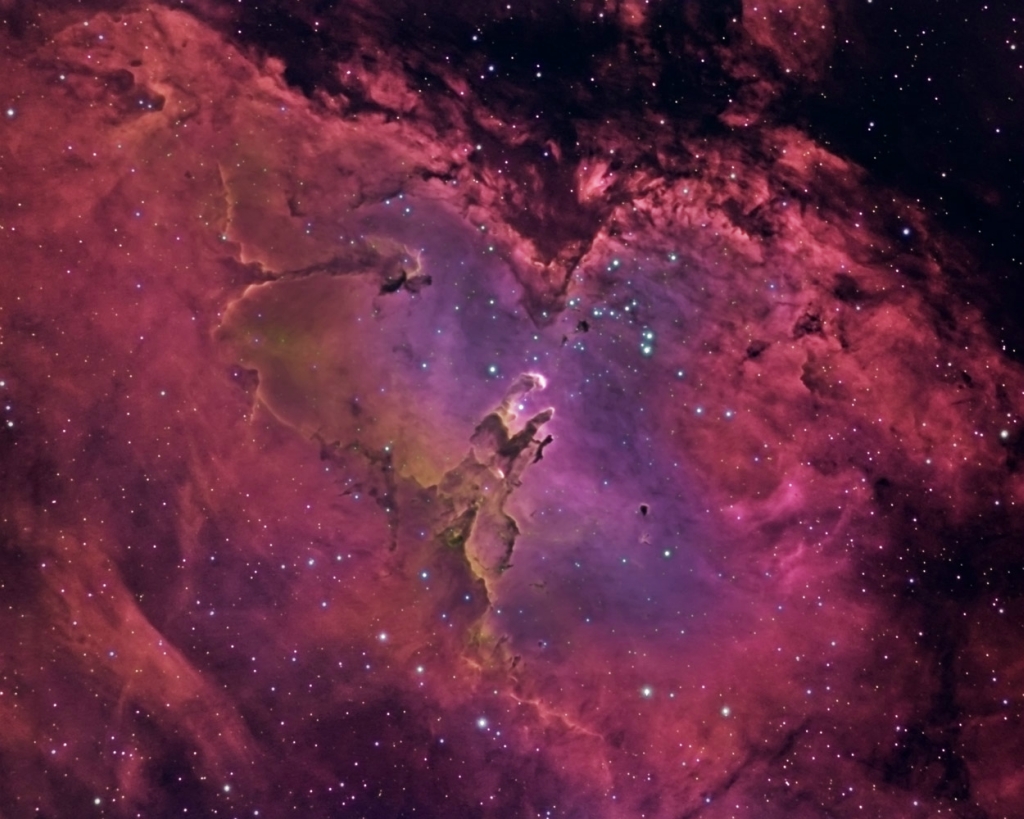The Eagle Nebula
This is the Eagle Nebula, which looks amazing. But first what is a nebula, well a nebula is just a giant cloud of dust, helium, hydrogen and ionized gas in space. These huge clouds are light years across and this one is around 9.5 light years across. But what is so amazing about these nebula is that they are a great source of material to form new stars. When the dust and gasses clump up together they will start the process of creating new stars and even exoplanets of many kinds and forms. From afar we see a beautiful cloud filled with beauty, but upon a closer look, there is huge amounts of collapses happening around, material flying around, temperatures reaching thousands of Kelvin just an environment of chaos and disorder in order to form new stars and systems.
This picture is a section of the Eager nebula, known as the Pillars of Creation, where currently many new stars are being born in huge amounts.
NGC 6503
This galaxy know as NGC 6503 has an amazing color spectrum. It shows red and blue stars all around it, and huge amounts of dust lanes with in it as well. All this shows that the galaxy is very active, it has many old stars, and new ones forming, which are filled by the abundant dust and material with in itself. Even though this galaxy looks very active and promising it is located in a region of space where it is practically alone. Galaxies have only so much material to keep it going, once a galaxy has exhausted its resources most of its stars will die off and eventually the galaxy will turn OFF and freeze all the planets with in it. Every galaxy has this fate in store, but fortunately there are galaxy clusters where many galaxies surround each other, and some of these eventually collide with one another to make an even bigger galaxy. When this happens the galaxy is able to live longer since it has more material and resources, but for GNC 6503 it is literally alone with no galaxy near it to provide more material, This is one of the loneliest places in the galaxy, even though it contains billions of star systems.
Sources:
http://www.nasa.gov/image-feature/goddard/lonely-galaxy-lost-in-space
Sources:
http://www.nasa.gov/image-feature/goddard/lonely-galaxy-lost-in-space



3 points.
ReplyDelete